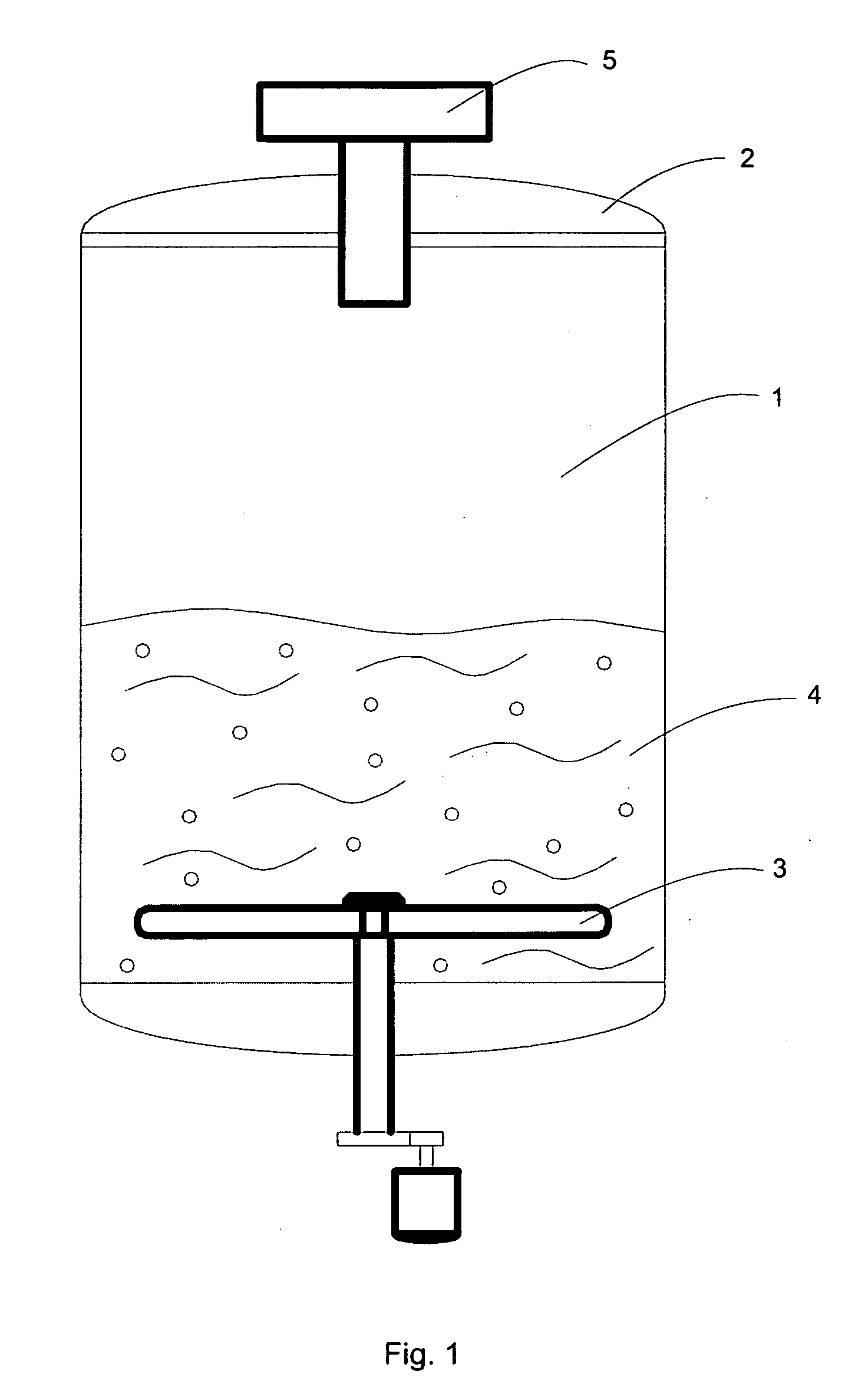Biodiesel production process using vegetal oils or animal fat and induction through microwaves
- Summary
- Abstract
- Description
- Claims
- Application Information
AI Technical Summary
Benefits of technology
Problems solved by technology
Method used
Image
Examples
Embodiment Construction
[0006] The aim of this invention is to use a device, consisting in a cavity developed to allow the use of microwaves, through microwaves generator (magnetrons) and the use of this device in order to induce, through microwave radiation, the transesterification or esterification reactions of a vegetable oil, animal fat or fatty acid to proceed smoothly in acidic or basic media. Microwave radiation accelerates the heating process and promotes the reaction, in acidic media, in a shorter time when compared to conventional heating methods. The process described herein is secure and efficient, affording the products in higher yields, when compared to the base catalyzed processes, since it avoids soap formation, and take advantage of the presence of free fatty acids, which, in this case, accelerates the reaction further. Therefore, the oil / animal fat purity requirements are lower than in the conventional base catalyzed process, making this acidic microwave induced process much cheaper than ...
PUM
| Property | Measurement | Unit |
|---|---|---|
| Fraction | aaaaa | aaaaa |
| Fraction | aaaaa | aaaaa |
| Fraction | aaaaa | aaaaa |
Abstract
Description
Claims
Application Information
 Login to View More
Login to View More - Generate Ideas
- Intellectual Property
- Life Sciences
- Materials
- Tech Scout
- Unparalleled Data Quality
- Higher Quality Content
- 60% Fewer Hallucinations
Browse by: Latest US Patents, China's latest patents, Technical Efficacy Thesaurus, Application Domain, Technology Topic, Popular Technical Reports.
© 2025 PatSnap. All rights reserved.Legal|Privacy policy|Modern Slavery Act Transparency Statement|Sitemap|About US| Contact US: help@patsnap.com

